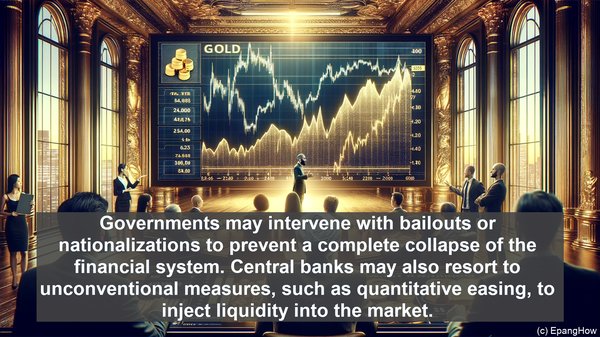Introduction: The Intricacies of the Financial World
Hello everyone, and welcome to today’s video. The financial landscape is a complex web of interconnected factors, and understanding its various components is crucial. Two terms that often come up in discussions are ‘financial crisis’ and ‘financial downturn.’ While they may seem similar, they have distinct characteristics and implications. In this video, we’ll delve into the differences between the two, shedding light on their unique aspects.

Defining a Financial Downturn: A Period of Economic Slowdown
A financial downturn, also known as an economic downturn or a slump, refers to a phase when the overall economic activity experiences a decline. During such periods, various economic indicators, such as GDP growth, employment rates, and consumer spending, show a downward trend. Financial downturns are a natural part of the economic cycle, and they can be caused by various factors, including changes in government policies, global economic conditions, or even natural disasters. While they can be disruptive, they are generally considered temporary and are expected to be followed by a recovery phase.
Understanding a Financial Crisis: A Severe Disruption
On the other hand, a financial crisis is a more severe and intense event. It is characterized by a sudden and significant disruption in the financial system. Unlike a financial downturn, which affects the overall economy, a financial crisis often originates within the financial sector itself. It can be triggered by factors such as a banking system collapse, a stock market crash, or a housing market bubble burst. The consequences of a financial crisis are far-reaching and can have long-term implications, including a prolonged economic recession, widespread unemployment, and even social and political unrest.

The Role of Government and Central Banks
During both financial downturns and financial crises, the role of government and central banks becomes crucial. In a financial downturn, governments often employ various measures, such as fiscal stimulus packages or tax cuts, to stimulate economic activity and encourage spending. Central banks, on the other hand, may lower interest rates to make borrowing more accessible, thereby boosting investment. In a financial crisis, the response is often more immediate and drastic. Governments may intervene with bailouts or nationalizations to prevent a complete collapse of the financial system. Central banks may also resort to unconventional measures, such as quantitative easing, to inject liquidity into the market.
Implications and Recovery
The implications of a financial crisis are generally more severe and long-lasting compared to a financial downturn. While a financial downturn is expected to be followed by a recovery phase, the recovery from a financial crisis can be slow and arduous. It often requires significant structural changes, reforms, and a restoration of investor and consumer confidence. The 2008 global financial crisis, for example, took years for the global economy to fully recover from. In contrast, a financial downturn, if managed effectively, can be relatively short-lived.
